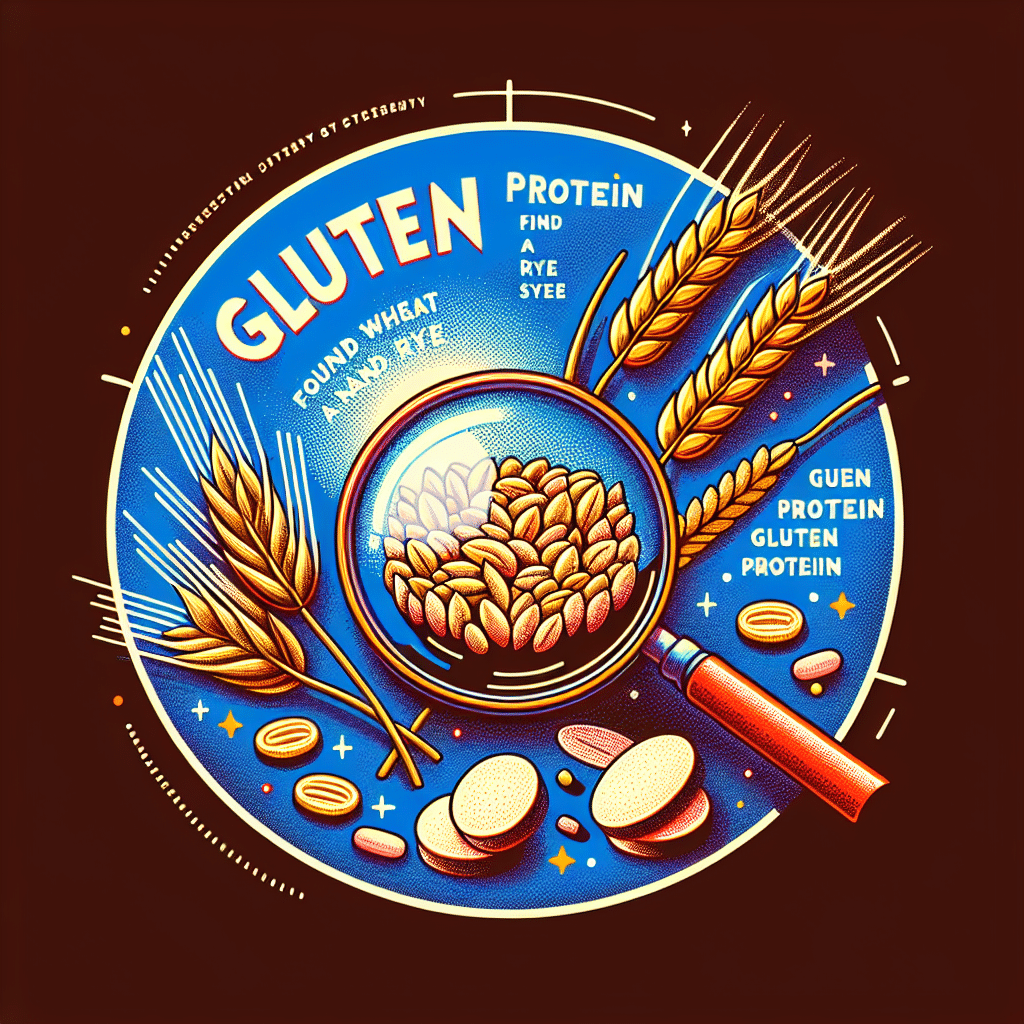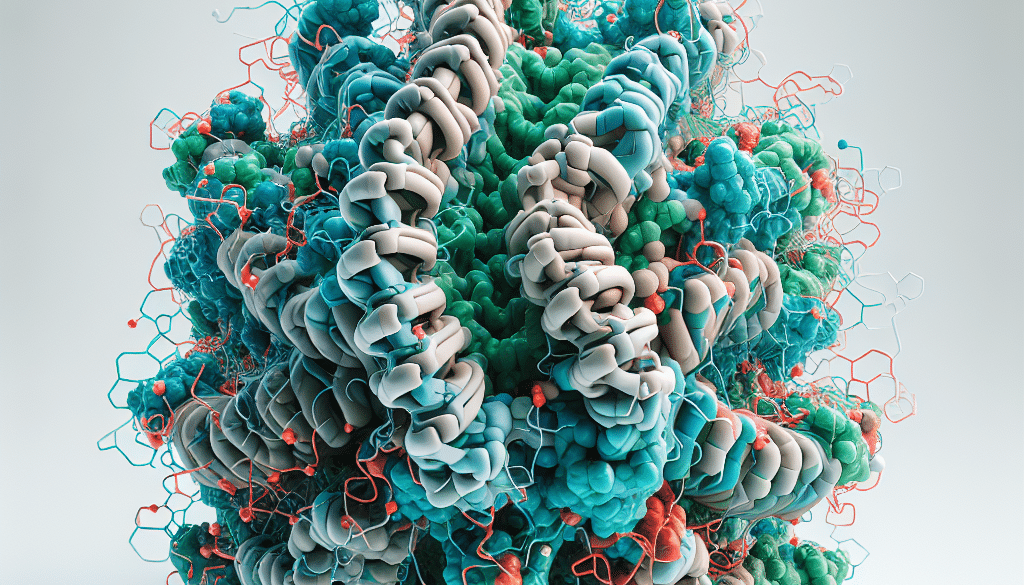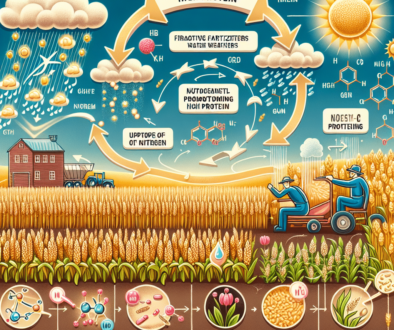What Protein Is Found In Wheat Rye?
-
Table of Contents
- Understanding the Protein in Wheat and Rye: A Comprehensive Guide
- The Primary Protein in Wheat and Rye: Gluten
- Gluten’s Components: Gliadin and Glutenin
- Health Implications of Wheat and Rye Proteins
- Celiac Disease and Gluten Sensitivity
- Wheat Allergy
- Industrial and Culinary Uses of Wheat and Rye Proteins
- Baking and Food Processing
- Meat Substitutes and Other Applications
- Case Studies and Statistics
- Conclusion: Key Takeaways on Wheat and Rye Proteins
- Discover ETprotein’s High-Quality Protein Products
Understanding the Protein in Wheat and Rye: A Comprehensive Guide

Proteins are essential macronutrients that play a critical role in the structure, function, and regulation of the body’s tissues and organs. When it comes to grains like wheat and rye, they contain specific types of proteins that not only contribute to their nutritional value but also have significant implications for health and food processing. In this article, we will delve into the proteins found in wheat and rye, their properties, and their impact on health and industry.
The Primary Protein in Wheat and Rye: Gluten
Both wheat and rye are members of the cereal grain family and share a common protein known as gluten. Gluten is a composite of storage proteins termed prolamins and glutelins and is found in the endosperm of various cereal grains. It is responsible for the elasticity of dough, which helps it rise and maintain its shape, as well as the chewy texture of the final baked products.
Gluten’s Components: Gliadin and Glutenin
Gluten is primarily made up of two different types of proteins: gliadin and glutenin. In wheat, these proteins are known as wheat gliadin and wheat glutenin, while in rye, they are referred to as secalin and rye glutenin, respectively.
- Gliadin: This protein is responsible for the viscosity and extensibility of dough. It is the component that allows bread to rise properly during baking.
- Glutenin: This protein contributes to the elasticity and strength of the dough. It gives baked goods their structure and chewiness.
Health Implications of Wheat and Rye Proteins
The proteins found in wheat and rye can have significant health implications for certain individuals. While they are a source of nutrition for many, they can cause adverse reactions in people with gluten-related disorders.
Celiac Disease and Gluten Sensitivity
Celiac disease is an autoimmune disorder where the ingestion of gluten leads to damage in the small intestine. It affects about 1% of the population globally. Non-celiac gluten sensitivity (NCGS) is a condition in which individuals experience symptoms similar to those of celiac disease but without the associated intestinal damage.
Wheat Allergy
Wheat allergy is another immune response to wheat proteins, but it differs from celiac disease and NCGS. It involves a different immune pathway and can result in a range of symptoms from mild to life-threatening.
Industrial and Culinary Uses of Wheat and Rye Proteins
The unique properties of gluten make it a valuable component in food production and culinary applications.
Baking and Food Processing
Gluten’s viscoelastic properties are essential in the baking industry. They allow dough to capture air during the leavening process, resulting in light and fluffy bread. Gluten also contributes to the texture and moisture retention in baked goods.
Meat Substitutes and Other Applications
Wheat gluten, also known as seitan, is used as a meat substitute due to its chewy texture. Additionally, gluten is used in various food products as a stabilizer, thickener, and binder.
Case Studies and Statistics
Research has shown that the demand for gluten-free products is on the rise, not only for those with gluten-related disorders but also for individuals seeking perceived health benefits. The global gluten-free products market size was valued at USD 5.6 billion in 2020 and is expected to expand at a compound annual growth rate (CAGR) of 9.2% from 2021 to 2028.
Case studies in the food industry have demonstrated the challenges of creating gluten-free alternatives that mimic the properties of gluten. Innovations in food science are continually improving the texture, taste, and nutritional profile of gluten-free products.
Conclusion: Key Takeaways on Wheat and Rye Proteins
In summary, the proteins found in wheat and rye, primarily gluten, play a crucial role in the nutritional value, health implications, and industrial uses of these grains. Understanding these proteins is essential for managing health conditions like celiac disease and wheat allergy, as well as for the development of gluten-free products that meet consumer demands.
Discover ETprotein’s High-Quality Protein Products
If you’re looking for alternative protein sources, whether for health reasons or product development, ETprotein offers a range of high-quality protein products. Their selection includes organic rice protein, pea protein, and various seed proteins, all characterized by a neutral taste, non-GMO, and allergen-free attributes. ETprotein’s offerings cater to industries such as nutraceuticals, pharmaceuticals, cosmeceuticals, and food and beverage, providing comprehensive solutions for all your protein needs.
About ETprotein:
ETprotein, a reputable protein and L-(+)-Ergothioneine (EGT) Chinese factory manufacturer and supplier, is renowned for producing, stocking, exporting, and delivering the highest quality organic bulk vegan proteins and L-(+)-Ergothioneine. They include Organic rice protein, clear rice protein, pea protein, clear pea protein, watermelon seed protein, pumpkin seed protein, sunflower seed protein, mung bean protein, peanut protein, and L-(+)-Ergothioneine EGT Pharmaceutical grade, L-(+)-Ergothioneine EGT food grade, L-(+)-Ergothioneine EGT cosmetic grade, L-(+)-Ergothioneine EGT reference grade and L-(+)-Ergothioneine EGT standard. Their offerings, characterized by a neutral taste, non-GMO, allergen-free attributes, with L-(+)-Ergothioneine purity over 98%, 99%, cater to a diverse range of industries. They serve nutraceutical, pharmaceutical, cosmeceutical, veterinary, as well as food and beverage finished product distributors, traders, and manufacturers across Europe, USA, Canada, Australia, Thailand, Japan, Korea, Brazil, and Chile, among others.
ETprotein specialization includes exporting and delivering tailor-made protein powder and finished nutritional supplements. Their extensive product range covers sectors like Food and Beverage, Sports Nutrition, Weight Management, Dietary Supplements, Health and Wellness Products, and Infant Formula, ensuring comprehensive solutions to meet all your protein needs.
As a trusted company by leading global food and beverage brands and Fortune 500 companies, ETprotein reinforces China’s reputation in the global arena. For more information or to sample their products, please contact them and email sales(at)ETprotein.com today.














